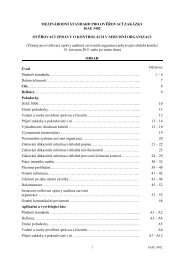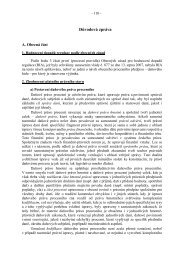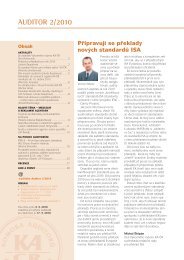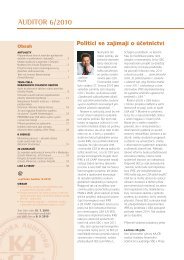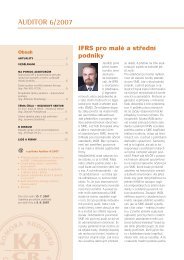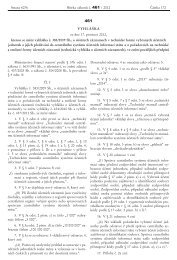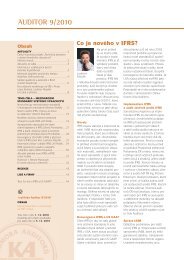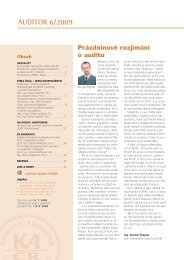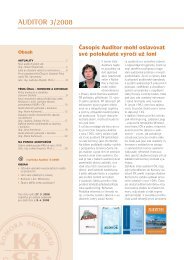Guide to Using International Standards on Auditing in - IFAC
Guide to Using International Standards on Auditing in - IFAC
Guide to Using International Standards on Auditing in - IFAC
You also want an ePaper? Increase the reach of your titles
YUMPU automatically turns print PDFs into web optimized ePapers that Google loves.
91<br />
<str<strong>on</strong>g>Guide</str<strong>on</strong>g> <str<strong>on</strong>g>to</str<strong>on</strong>g> <str<strong>on</strong>g>Us<strong>in</strong>g</str<strong>on</strong>g> <str<strong>on</strong>g>Internati<strong>on</strong>al</str<strong>on</strong>g> <str<strong>on</strong>g>Standards</str<strong>on</strong>g> <strong>on</strong> <strong>Audit<strong>in</strong>g</strong> <strong>in</strong> the Audits of Small- and Medium-Sized Entities Volume 1—Core C<strong>on</strong>cepts<br />
Audi<str<strong>on</strong>g>to</str<strong>on</strong>g>rs are sometimes tempted <str<strong>on</strong>g>to</str<strong>on</strong>g> lower the overall materiality amount when the risk of material<br />
misstatement is assessed as high. This would not be appropriate, however, as overall materiality addresses the<br />
needs of f<strong>in</strong>ancial statements users, not the level of audit risk <strong>in</strong>volved.<br />
If audit risk was a fac<str<strong>on</strong>g>to</str<strong>on</strong>g>r <strong>in</strong> sett<strong>in</strong>g overall materiality, a high-risk audit would end up with a lower overall<br />
materiality amount than that set for a similar-sized entity where audit risk was low. Assum<strong>in</strong>g that the<br />
<strong>in</strong>formati<strong>on</strong> needs of f<strong>in</strong>ancial statement users are the same, regardless of audit risk, sett<strong>in</strong>g the overall<br />
materiality amount at a lower level would result <strong>in</strong>:<br />
• Provid<strong>in</strong>g f<strong>in</strong>ancial statement users with an expectati<strong>on</strong> that smaller misstatements <strong>in</strong> the f<strong>in</strong>ancial<br />
statements (than is actually necessary) will be identified by the audi<str<strong>on</strong>g>to</str<strong>on</strong>g>r; and<br />
• Additi<strong>on</strong>al audit work <str<strong>on</strong>g>to</str<strong>on</strong>g> ensure that audit risk has been reduced <str<strong>on</strong>g>to</str<strong>on</strong>g> an appropriately low level.<br />
Because overall materiality is set <strong>in</strong> relati<strong>on</strong> <str<strong>on</strong>g>to</str<strong>on</strong>g> the needs of f<strong>in</strong>ancial statement users, it would not be changed<br />
as a result of audit f<strong>in</strong>d<strong>in</strong>gs and changes <strong>in</strong> assessed risks. Overall materiality is required <str<strong>on</strong>g>to</str<strong>on</strong>g> be updated when<br />
the audi<str<strong>on</strong>g>to</str<strong>on</strong>g>r becomes aware of <strong>in</strong>formati<strong>on</strong> that would have caused the <strong>in</strong>itial determ<strong>in</strong>ati<strong>on</strong> of materiality <str<strong>on</strong>g>to</str<strong>on</strong>g><br />
be a different amount (or amounts).<br />
At the c<strong>on</strong>clusi<strong>on</strong> of the audit, overall materiality will be used for evaluat<strong>in</strong>g the effect of identified<br />
misstatements <strong>on</strong> the f<strong>in</strong>ancial statements and the appropriateness of the op<strong>in</strong>i<strong>on</strong> <strong>in</strong> the audi<str<strong>on</strong>g>to</str<strong>on</strong>g>r’s report.<br />
Performance Materiality<br />
Performance materiality allows the audi<str<strong>on</strong>g>to</str<strong>on</strong>g>r <str<strong>on</strong>g>to</str<strong>on</strong>g> address the risks of misstatement <strong>in</strong> account balances, classes<br />
of transacti<strong>on</strong>s, and disclosures without hav<strong>in</strong>g <str<strong>on</strong>g>to</str<strong>on</strong>g> change overall materiality. Performance materiality<br />
enables the audi<str<strong>on</strong>g>to</str<strong>on</strong>g>r <str<strong>on</strong>g>to</str<strong>on</strong>g> establish materiality amounts that are based <strong>on</strong> the overall materiality, but are set at<br />
lower amounts <str<strong>on</strong>g>to</str<strong>on</strong>g> reflect the risk of not detect<strong>in</strong>g misstatements and <str<strong>on</strong>g>to</str<strong>on</strong>g> reflect risk assessments. This lower<br />
amount(s) establishes a safety buffer between the materiality used for determ<strong>in</strong><strong>in</strong>g the nature and extent of<br />
test<strong>in</strong>g (performance materiality) and the materiality amount for the f<strong>in</strong>ancial statements as a whole (overall<br />
materiality).<br />
Sett<strong>in</strong>g an appropriate amount for performance materiality will ensure that more work is performed, which<br />
<strong>in</strong>creases the likelihood that misstatements (if they exist) will be identified. For example, if overall materiality<br />
was 20,000Є and audit procedures were planned <str<strong>on</strong>g>to</str<strong>on</strong>g> detect all errors <strong>in</strong> excess of 20,000Є, it is quite possible<br />
that an error of, say, 8,000Є would go undetected. If three such errors existed, amount<strong>in</strong>g <str<strong>on</strong>g>to</str<strong>on</strong>g> 24,000Є, the<br />
f<strong>in</strong>ancial statements would be materially misstated. However, if performance materiality was set at 12,000Є, it<br />
would be much more likely that at least <strong>on</strong>e or all of the 8,000Є errors would be detected. Even if <strong>on</strong>ly <strong>on</strong>e of<br />
the three errors was identified and corrected, the rema<strong>in</strong><strong>in</strong>g misstatement of 16,000Є would be less than the<br />
overall materiality, and the f<strong>in</strong>ancial statements as a whole would not be materially misstated.<br />
Sett<strong>in</strong>g an appropriate amount for performance materiality <strong>in</strong>volves the exercise of professi<strong>on</strong>al judgment,<br />
and is not a simple mechanical calculati<strong>on</strong> such as a percentage (e.g., 75%) of the overall materiality level.<br />
However, based <strong>on</strong> the particular circumstances of the entity be<strong>in</strong>g audited, it could be set as a s<strong>in</strong>gle amount<br />
for the f<strong>in</strong>ancial statements as a whole, or at <strong>in</strong>dividual amounts for particular balances, transacti<strong>on</strong>s, and<br />
disclosures.




